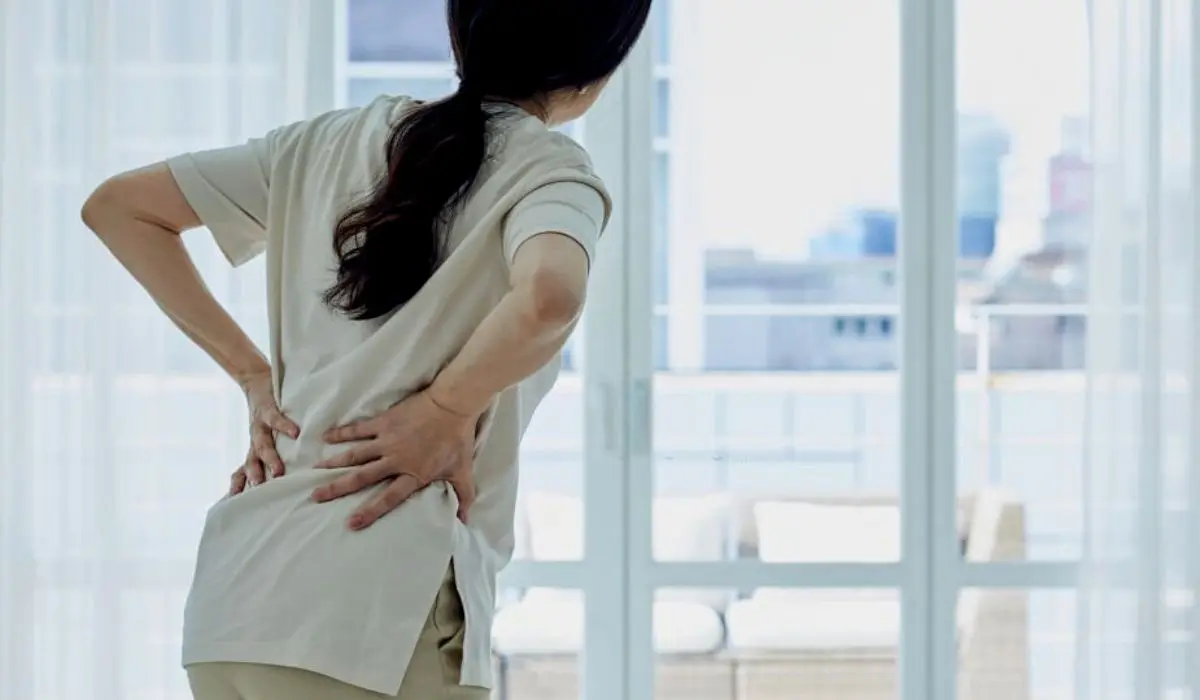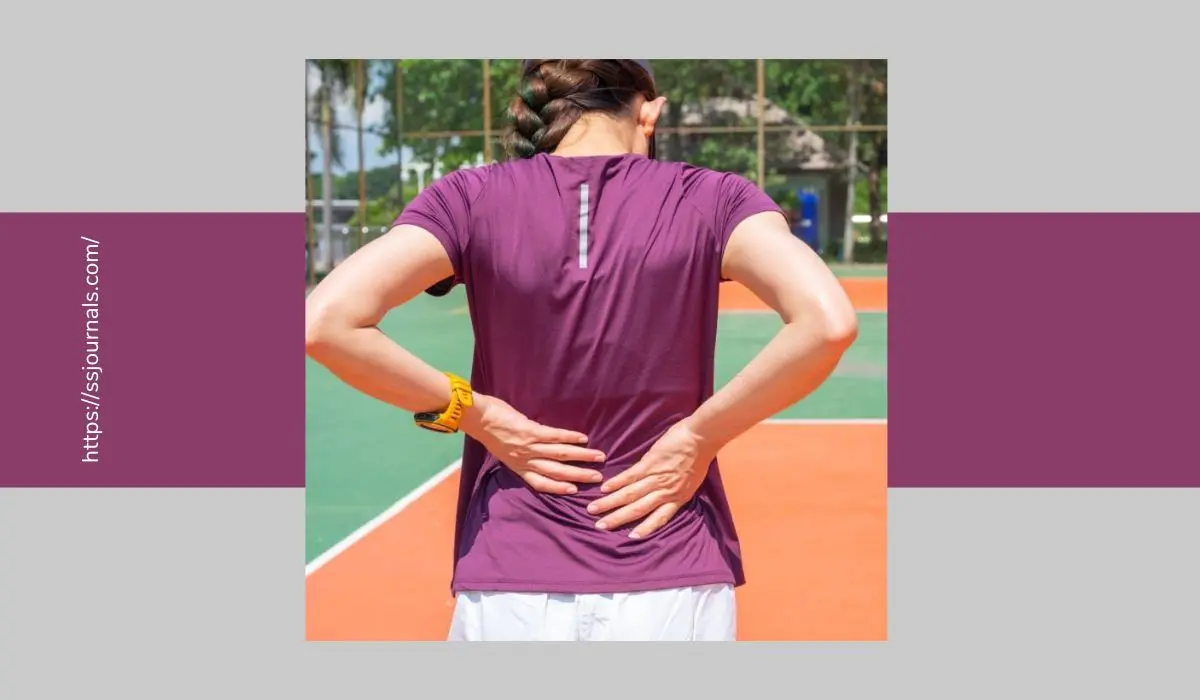Women often suffer from hip joint pain. It can be a dull ache, sharp stabbing sensation, or stiffness in the hip region.
Additionally, women may have difficulty walking, reduced range of motion, and discomfort while performing routine tasks.
Age is a key factor when it comes to hip joint pain in women. Women over a certain age are more prone to it.
Menopause can also lead to decreased bone density, increasing the risk of fractures and osteoporosis.
Obesity puts a lot of stress on the hip joints, leading to inflammation and pain.
Women who have given birth may also experience hip joint issues due to increased pressure on the joints during pregnancy and delivery.
Understanding The Hip Joint
The hip joint is a complex structure connecting the pelvis and femur.
It enables movements such as running, walking, and jumping. Knowing its anatomy is vital to identify hip joint pain causes.
It’s a ball-and-socket joint with the femoral head (ball) fitting into the acetabulum (socket).
Ligaments give added stability, while cartilage cushions the bones to avoid friction when moving.

Uniquely, the hip joint is incredibly strong and can bear loads. This lets us go about our daily activities without experiencing discomfort.
But age, injury, and medical conditions can cause hip pain.
A professional dancer’s chronic hip pain hindered their performance. But precise diagnosis and treatment brought back agility and enabled them to continue their passion.
Is your hip joint pain trying to steal the show like a diva? Making every step a dramatic performance?
Common Symptoms Of Hip Joint Pain
Ladies, beware! Hip joint pain can affect anyone – no matter if you’re an athlete or a couch potato.
It’s important to recognize the symptoms of hip joint pain to properly address it in its early stages. Common symptoms include:
👉 Persistent Discomfort: Feeling discomfort in the hip area, from mild to severe.
👉 Limited Range of Motion: Difficulty performing movements such as bending, squatting, or walking.
👉 Grinding Sensation: Experiencing a grinding sensation in the hip when moving, accompanied by clicking or popping sounds.
👉 Pain While Sleeping: Pain disrupts sleep, making it hard to find a comfortable position.
👉 Muscle Weakness: Weaker muscles in the surrounding areas, such as the buttocks and thighs.
These symptoms can vary for each individual. Risk factors like obesity, aging, previous injuries, and conditions like arthritis can increase the likelihood of developing hip joint pain.
Lily is a great example of how hip joint pain can affect one’s lifestyle. She was unable to perform her favorite activities due to her discomfort and pain.
With the right treatment and physical therapy, she regained her mobility and active lifestyle.
Understanding the common symptoms and seeking medical attention can help women like Lily manage their discomfort and improve their quality of life.
Stay informed and identify early signs – it’ll help you take the necessary steps toward better hip health.
Risk Factors For Hip Joint Pain In Women
Women experience many challenges, one being hip joint pain. What increases risk? Let’s investigate!
👉 Age: As women get older, their risk for hip joint pain increases. Joints naturally wear down.
👉 Hormones: Hormonal changes, like in pregnancy or menopause, can cause more inflammation and weaker joints.
👉 Obesity: Carrying too much weight puts pressure on hips and joints, causing pain and discomfort.
👉 No Activity: Not getting regular exercise weakens muscles supporting the hips, making them more prone to pain.
👉 Injury Or Trauma: Women with past hip injuries or trauma have a higher chance of hip joint pain.
👉 Genetics: Genetics can also be a factor if the family has arthritis or other joint conditions.
It’s important to take proactive measures to prevent or ease hip joint pain.
Regular exercise, a healthy diet and weight, and medical attention for any past injuries can help reduce the risk.
Don’t let hip joint pain stop you from living your best life – take action now!
Treatment Options for Hip Joint Pain
It’s worth giving attention to lifestyle changes, such as maintaining a healthy weight and avoiding activities that worsen symptoms.
Physical therapy and medications are usually the go-to for non-invasive treatments.
Therapy helps by strengthening and increasing the flexibility of muscles, medications give temporary relief.
For more direct treatment of inflammation in the joint, injections are an option.
Surgical interventions, however, should only be looked into when other treatments are not successful due to the risks associated with them.
Preventing Hip Joint Pain in Women: To help avoid hip-related woes, better than ex-related ones.
Preventing Hip Joint Pain In Women
Pain in the hip joint can be stressful for women. But how can we avoid it? Here’s a practical guide!
👉 Stay Active: Regular exercise keeps your hip joints strong and flexible. Walk, swim, or do yoga. Do at least 30 minutes of moderate exercise every day.
👉 Maintain a Healthy Weight: Being overweight puts strain on your joints. Eat foods high in fruits, veggies, lean protein, and whole grains.
👉 Good Posture: Maintain good posture to keep your hips healthy. Avoid slouching and use supportive chairs.
👉 Risk Factors: High heels, family history, and menopause can all contribute to hip joint issues. Be aware and take precautions.
👉 Take Action: Don’t wait until it’s too late! Take action now to prevent hip joint pain. Your future self will thank you! Remember ladies, always listen to your hips.
Conclusion
Hip joint pain in women is a tricky matter. Different symptoms and factors could be the reason. To avoid and manage hip joint pain, it’s best to understand these potential causes.
Discomfort to severe pain might be the signs. It can be accompanied by stiffness, limited motion, and difficulty walking. Women should be aware of these signs to get help quickly.
Age, obesity, physical activity, and pregnancy or menopause could be risk factors. Older women are more likely to experience hip joint pain due to joint wear and tear.
To reduce the risk, keep a healthy weight and exercise regularly.
Pregnancy puts extra stress on the hips, while less estrogen during menopause can lead to lower bone density.
So, for women at these stages of life, proper nutrition and exercise are important.
Related:- When Is Low Blood Pressure Too Low? Hypotension And More
Genetic predisposition could also be a factor. If there’s a family history of hip problems or osteoarthritis, it’s important to recognize personal susceptibility and take preventative measures.
To reduce the impact of hip joint pain, early action is important.
Consult a healthcare professional for accurate diagnosis and treatment. Ignoring the signs could lead to further complications or disability.
Don’t let hip joint pain stop you from enjoying an active lifestyle. Be aware of the symptoms and factors associated with this condition.
Prevention is better than cure when it comes to strong and healthy hips.

